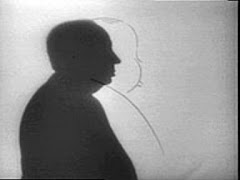In an essay in Movie which treated questions of film authorship (V. F. Perkins et al, ‘The Return of Movie,' Movie 20, Spring 1975, p. 12), the editors of that journal wrote that ‘in order to recognise particular sets of choices, one has to have some sense of available choices.’
Whether they are ‘fictional’ or not, films about film directing represent what it is difficult to to conjure or to conceptualise in words, even after meticulous film-studies research. They give us moment by moment evocations of the multiple agencies involved in the creation of films. They reveal that the individual agency of filmmakers is almost always creatively enabled by the necessary structure and constraints of the processes of production (say, of deadlines, of collective working, of budgets, of on-set disasters) as well as by the agency of others involved.
The films often give us a better general, but also a more precise and specific, sense of the kinds of choices available to a director than much academic writing on cinema, which often only attempts to recognise the multiplicity of these choices for the purposes of thematic or interpretative reading -- such are the usual limitations of film authorship studies, alas. But there are lots of other interesting and equally authorial questions that can be asked of films and film directing that can be inspired by on-screen representations of movie-making.
Not all writing on filmmaking is so limited, of course. In the following words from the brilliant chapter 'Direction and Authorship', in his magisterial book Film as Film (London: Penguin, 1972), Victor Perkins notes:
On film, as in any impure medium, we do not find one coherent material given stable form. Rather we are offered a variety of materials, disparate in kind and function, brought into relationships which we can hope to find pleasant, beautiful, amusing, surprising, significant and so on. The film-maker’s control is over these relationships rather than over the separate elements from which they are constructed.
Being in charge of relationships, of synthesis, [the director] is in charge of what makes a film a film. […] The director’s authority is a matter not of total creation but of sufficient control. [pp. 183-184]
I can only assert, in conclusion, here that, like Perkins, these contemporary films about directing (as well as classic ones, such as La Nuit américaine/Day for Night, directed by François Truffaut, France/Italy, 1973) testify to very few obvious traces of the Romantic conception of authorship and artistry, even as they usually also point to the indispensable role of the director in all aspects of contemporary filmmaking and film culture.
See you again after my break, when I will hopefully post some more thoughts from my book chapter on these matters.
© 2008 Catherine Grant






No comments:
Post a Comment